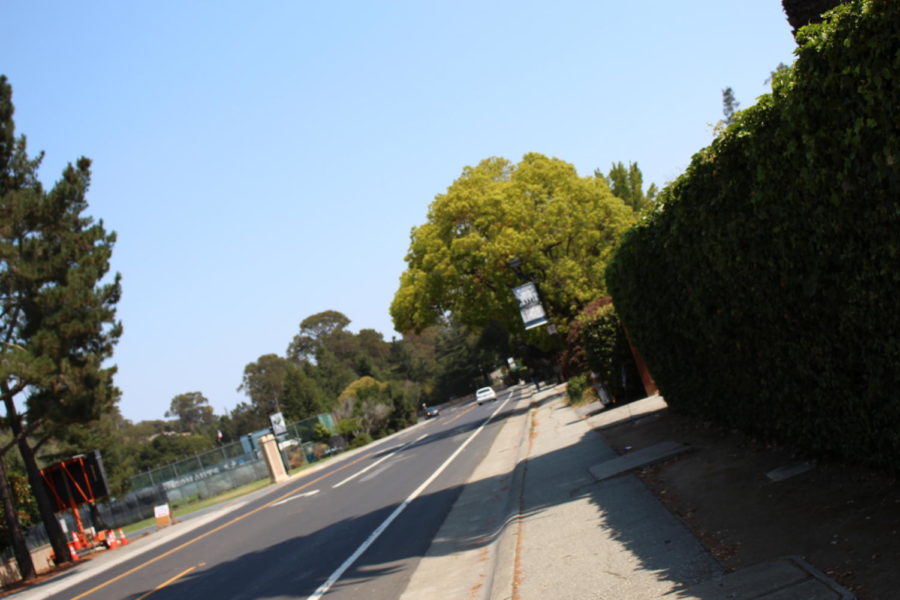The city of Belmont is currently feeling the wrath of the physical realm. As of late, it has come to the attention of the editorial board that Belmont’s streets, its symbolical winding roads and lush wildlife framed boulevards, are egregiously lopsided, far outstripping the national minimum for street levelness.
This great undermining has pivoted the city along its x-axis. Belmontians traversing the inexplicable, head-turning warped streets of Belmont show clear symptoms of daily tilt including acutely angled sagittal planes relative to the street (the national average for the street-relative sagittal plane angel — standing angel — is an orthogonal angle), relative directional and inner ear discombobulation, inability to balance, falling, and subsequent rolling post-fall. Theories as to how Belmont’s transport routes became horizontally rotated to such a degree have spread like bacillus anthracis inside a cow ranging from postulates by high school students to local folklore.
One Carlmont student claims that suspicious objects in the school’s senior parking lot may be the fount of Belmont’s lateral deviations.
The student, wishing to remain anonymous, said, “There’s a bundle of forks in the senior lot that are pretty enigmatic. They’ve been there for a long time — not sure how long. They seem pretty sketch though.”
It is hopefully quite obvious that Belmont’s streets are not, in fact, horizontally challenged. The above fib exemplifies that there exists a number of different writing stratagems to make the fallacious seem to be truth for the sake of argumentation and persuasion. Such practices include questionably legitimate quotations and photographic evidence, humor (I hope), and overbearingly academic language, all serving to disorient, connect with, and convince the reader without relaying actual truth.
Journalism is written with the goal to be completely impartial and objective. However, it is fundamental to people’s comprehensive capabilities for objective and subjective thought to be intertwined. Personal experiences and individual perceptions color each of our views of the world, causing our renditions of an event or piece of art to differ from our peers’.
This individualism and personal knowledge (as posited by Michael Polanyi) also interfere with writing, for writing is merely speaking that replaces sound with sight and pictures. It is impossible to write entirely objectively; words always have a slight connotation to them and in using words, an individual’s personal pull on knowledge is exposed.
Acknowledging the omnipresent subjective factors in writing, the majority of media is remarkably objective and a premier source of information. Of course, there will always be yellow journalists who twist the facts and conjure up false stories to pander to their viewership. However, it would be equally fallacious to assume that all publications are alike in this manner. After all, any journalist will tell you that good journalism is firstly informative, a sentiment reflected in the bulk of journalistic practice.
Despite a news story having the writer’s underlying bias, merely apprehending this bias is enough to filter it out of the objective information. While on one hand, journalists must uphold their objective writing as they disseminate information to society, society must also learn to read the news objectively and avoid falling into the ditch of opinions and subjective “facts.”
Thus it is central to the maximal functioning of the media within society that people read objectively, for pure information on current events, with the assumption that the news coverage will leak the writer’s bias, or else the current polarized environment will continue to diverge as society filters out the objective for the subjective, opined writings of yellow journalism.
*This editorial reflects the views of the Scot Scoop editorial board. This editorial was written by Ben Balster.



